
How to Use 120V Outlet: Examples, Pinouts, and Specs
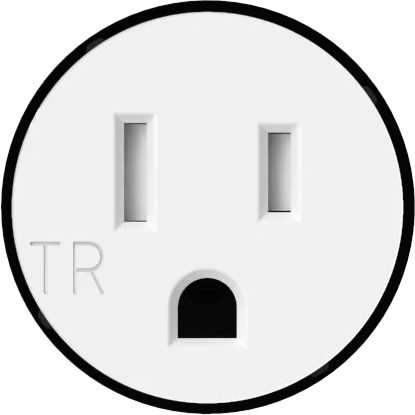
 Design with 120V Outlet in Cirkit Designer
Design with 120V Outlet in Cirkit DesignerIntroduction
A 120V outlet, also known as a receptacle, is a standard electrical socket found in residential and commercial buildings in North America and other regions with similar electrical standards. It is designed to provide alternating current (AC) power at a nominal voltage of 120 volts to a wide range of electronic devices and appliances such as lamps, chargers, computers, and kitchen appliances.
Explore Projects Built with 120V Outlet
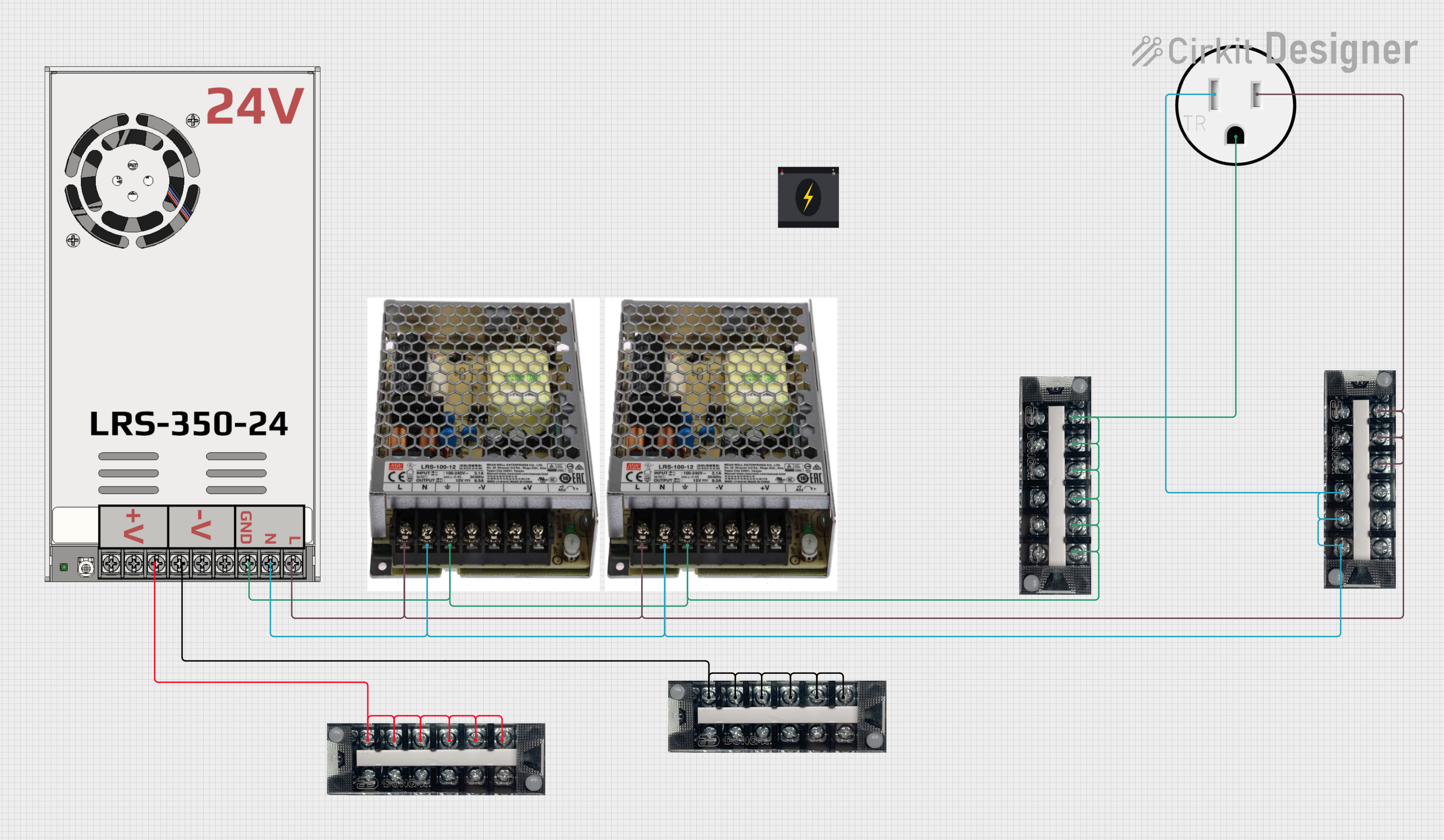
 Open Project in Cirkit Designer
Open Project in Cirkit Designer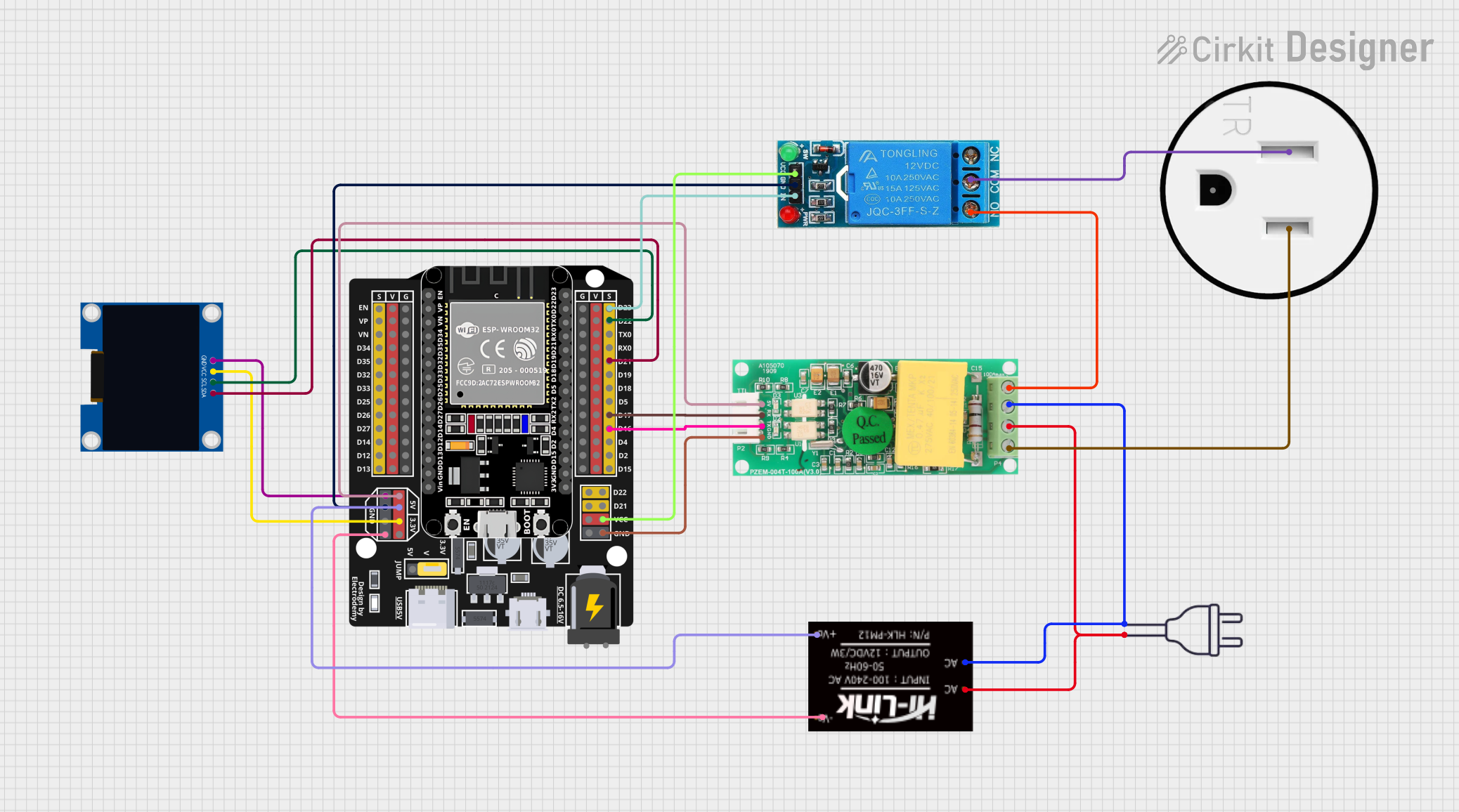
 Open Project in Cirkit Designer
Open Project in Cirkit Designer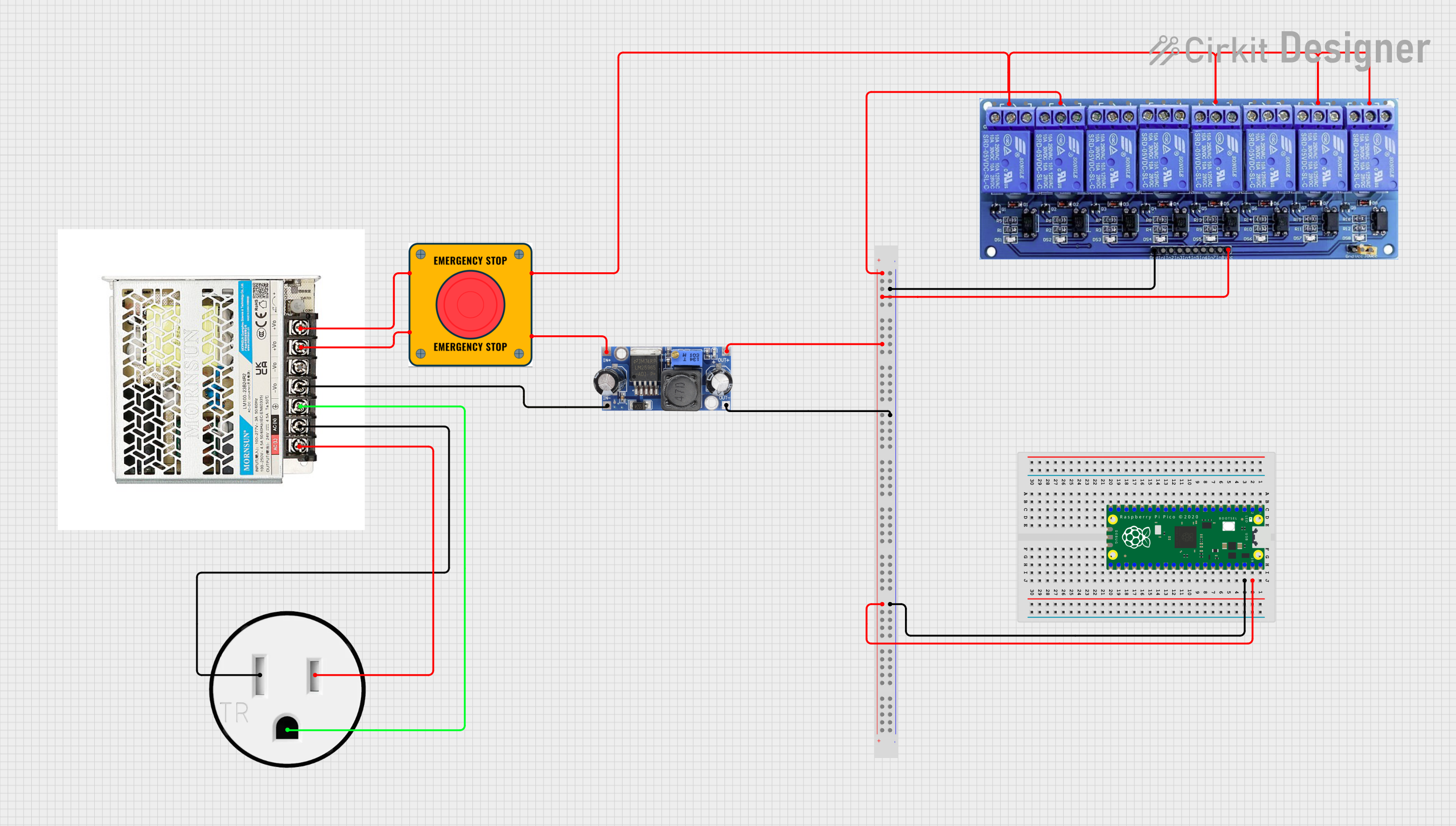
 Open Project in Cirkit Designer
Open Project in Cirkit Designer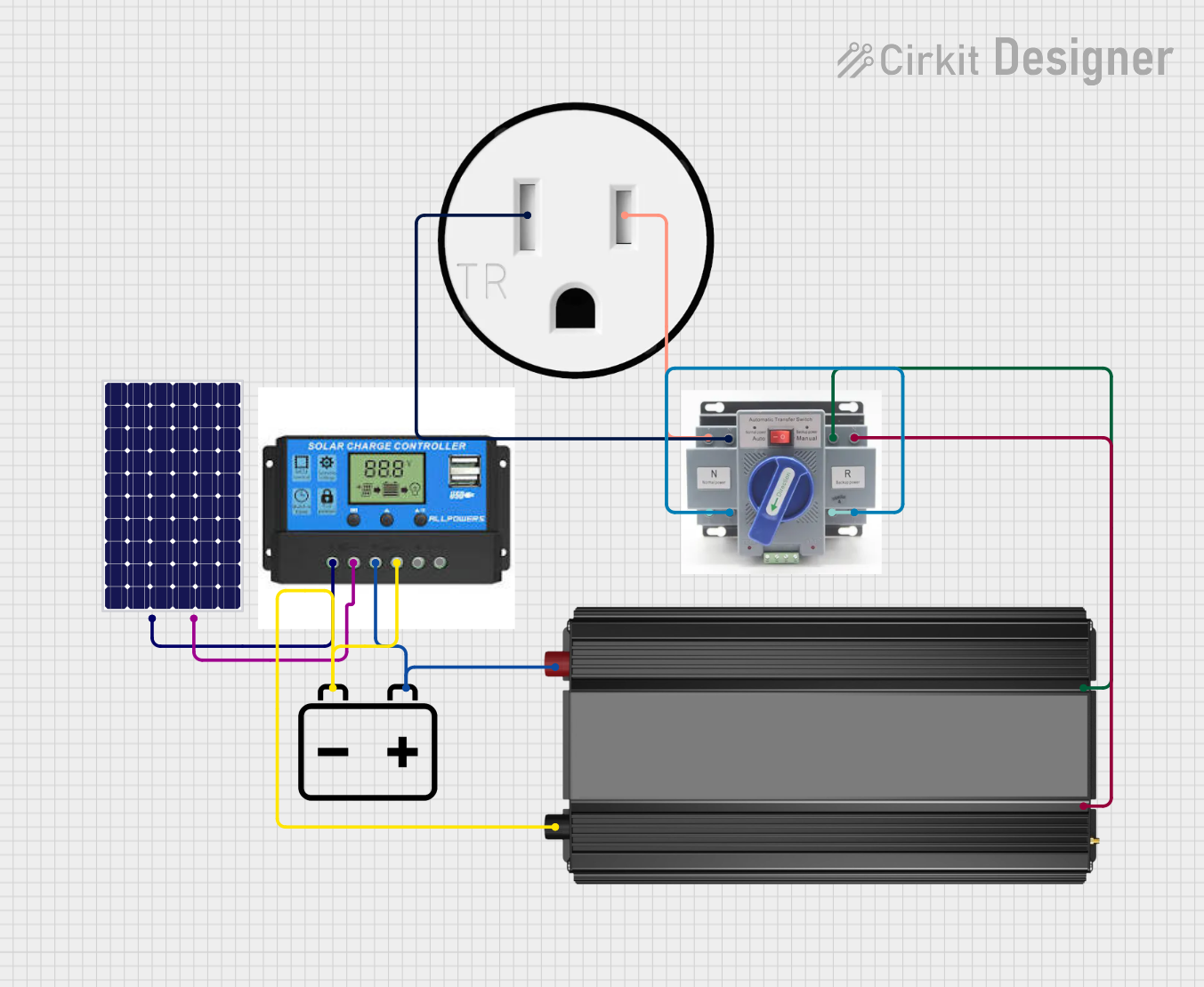
 Open Project in Cirkit Designer
Open Project in Cirkit DesignerExplore Projects Built with 120V Outlet

 Open Project in Cirkit Designer
Open Project in Cirkit Designer
 Open Project in Cirkit Designer
Open Project in Cirkit Designer
 Open Project in Cirkit Designer
Open Project in Cirkit Designer
 Open Project in Cirkit Designer
Open Project in Cirkit DesignerCommon Applications and Use Cases
- Residential homes for powering household appliances
- Office buildings for computers, printers, and other office equipment
- Public spaces for charging mobile devices
- Workshops for power tools
Technical Specifications
Key Technical Details
- Nominal Voltage: 120V AC
- Frequency: 60 Hz (standard in North America)
- Current Rating: Typically 15A or 20A
- Power Ratings: Up to 1800W for 15A outlets, 2400W for 20A outlets
Pin Configuration and Descriptions
| Pin Name | Description |
|---|---|
| Hot | The "hot" slot is the primary power carrier and is typically the shorter slot of the two parallel lines in the outlet. |
| Neutral | The "neutral" slot completes the circuit and is typically the longer slot parallel to the hot slot. |
| Ground | The "ground" pin is for safety and is the round or U-shaped hole. |
Usage Instructions
How to Use the Component in a Circuit
- Ensure Safety: Before working with a 120V outlet, turn off the power at the circuit breaker.
- Wiring: Connect the hot wire (usually black or red) to the hot terminal, the neutral wire (usually white) to the neutral terminal, and the ground wire (usually green or bare) to the ground terminal.
- Testing: Once installed, use a voltage tester to ensure the outlet is wired correctly and functioning properly.
Important Considerations and Best Practices
- Always adhere to local electrical codes and regulations.
- Use outlets with appropriate current ratings for the intended load.
- Ground Fault Circuit Interrupter (GFCI) outlets are recommended in wet or outdoor areas for added safety.
- Child-proof outlets are advisable in households with children.
Troubleshooting and FAQs
Common Issues Users Might Face
- Power Outage: Check the circuit breaker or fuse box for tripped breakers or blown fuses.
- Outlet Not Working: Test the outlet with a different device to rule out issues with the original device.
- Loose Connections: If the outlet is intermittent, it may have loose wiring that needs to be secured.
Solutions and Tips for Troubleshooting
- Reset GFCI: If the outlet is a GFCI type and not working, press the reset button on the outlet.
- Check Wiring: Ensure that the wiring is correct and secure. Incorrect wiring can lead to a non-functional outlet or pose a safety risk.
- Professional Help: If you are not experienced with electrical work, consult a licensed electrician for installation and troubleshooting.
FAQs
Q: Can I replace a 15A outlet with a 20A outlet? A: You can only replace a 15A outlet with a 20A outlet if the circuit wiring supports 20A and the breaker is rated for 20A.
Q: What does it mean when an outlet has a test and reset button? A: This is a GFCI outlet designed to protect against electrical shock by breaking the circuit when a fault is detected.
Q: Why does my outlet have a burning smell? A: A burning smell may indicate an electrical short or overheating. Turn off the power and consult an electrician immediately.
Note: This documentation does not cover the installation of 120V outlets in detail due to the risks associated with electrical work. It is highly recommended that installation and major troubleshooting be performed by a qualified electrician.